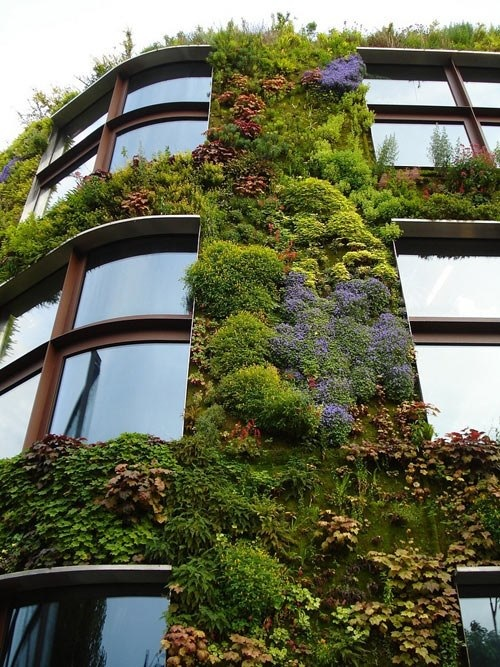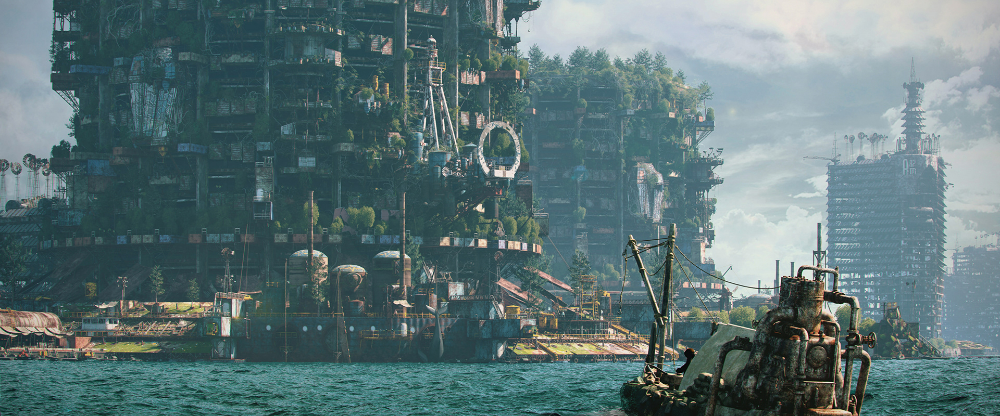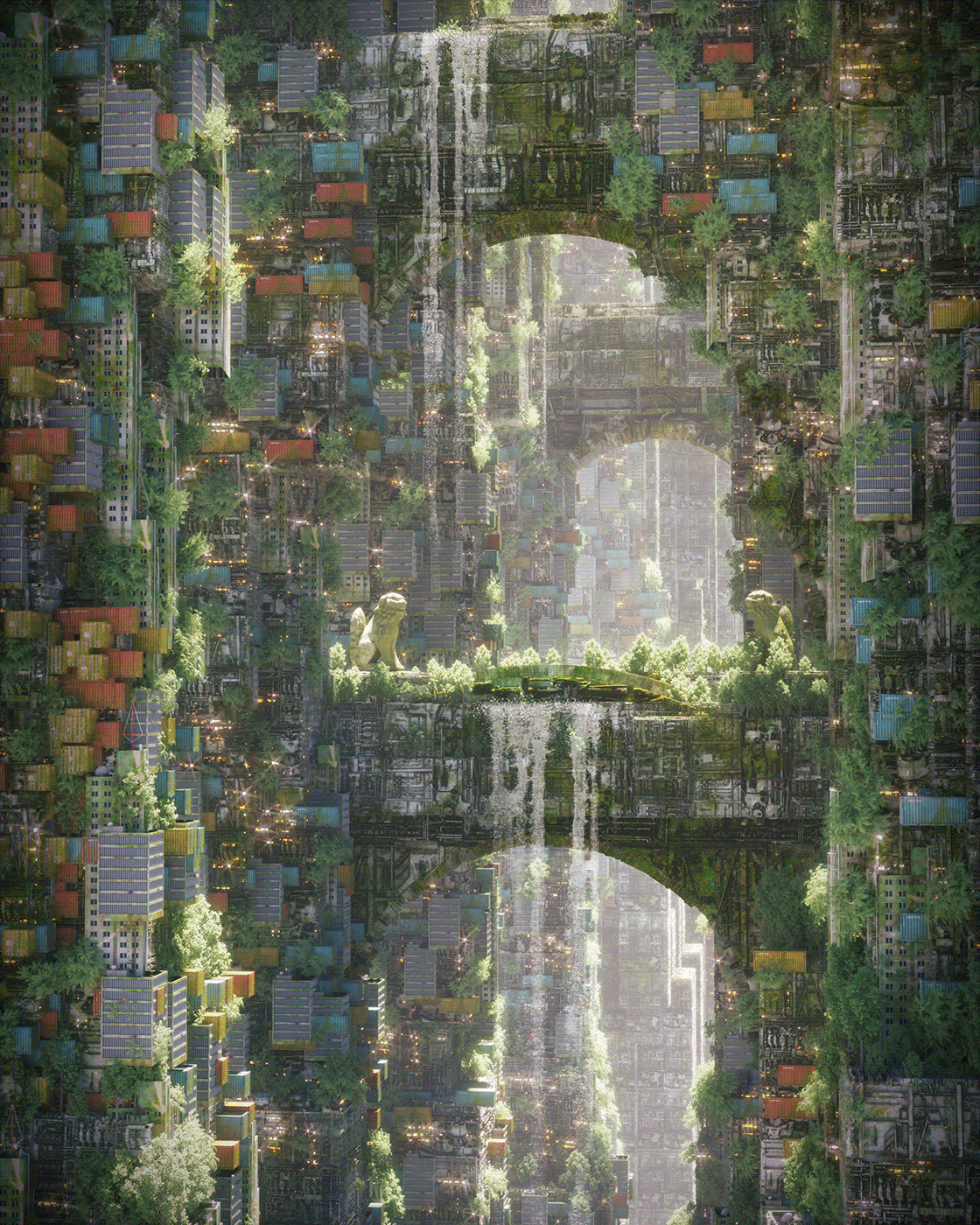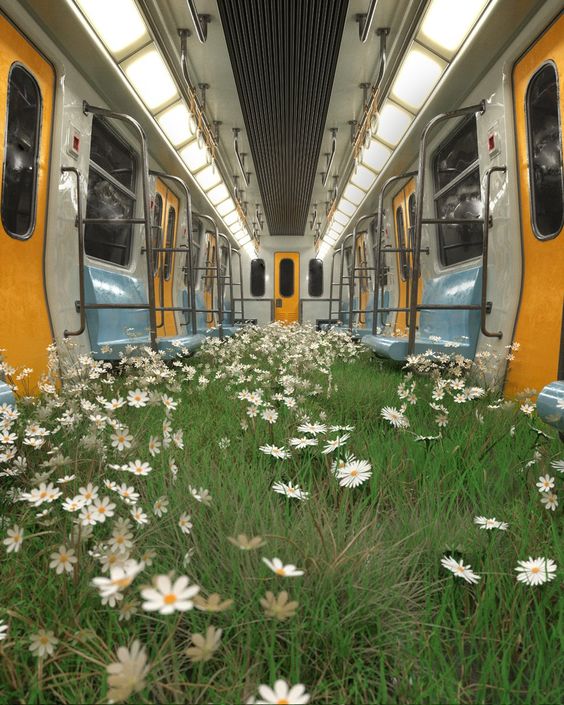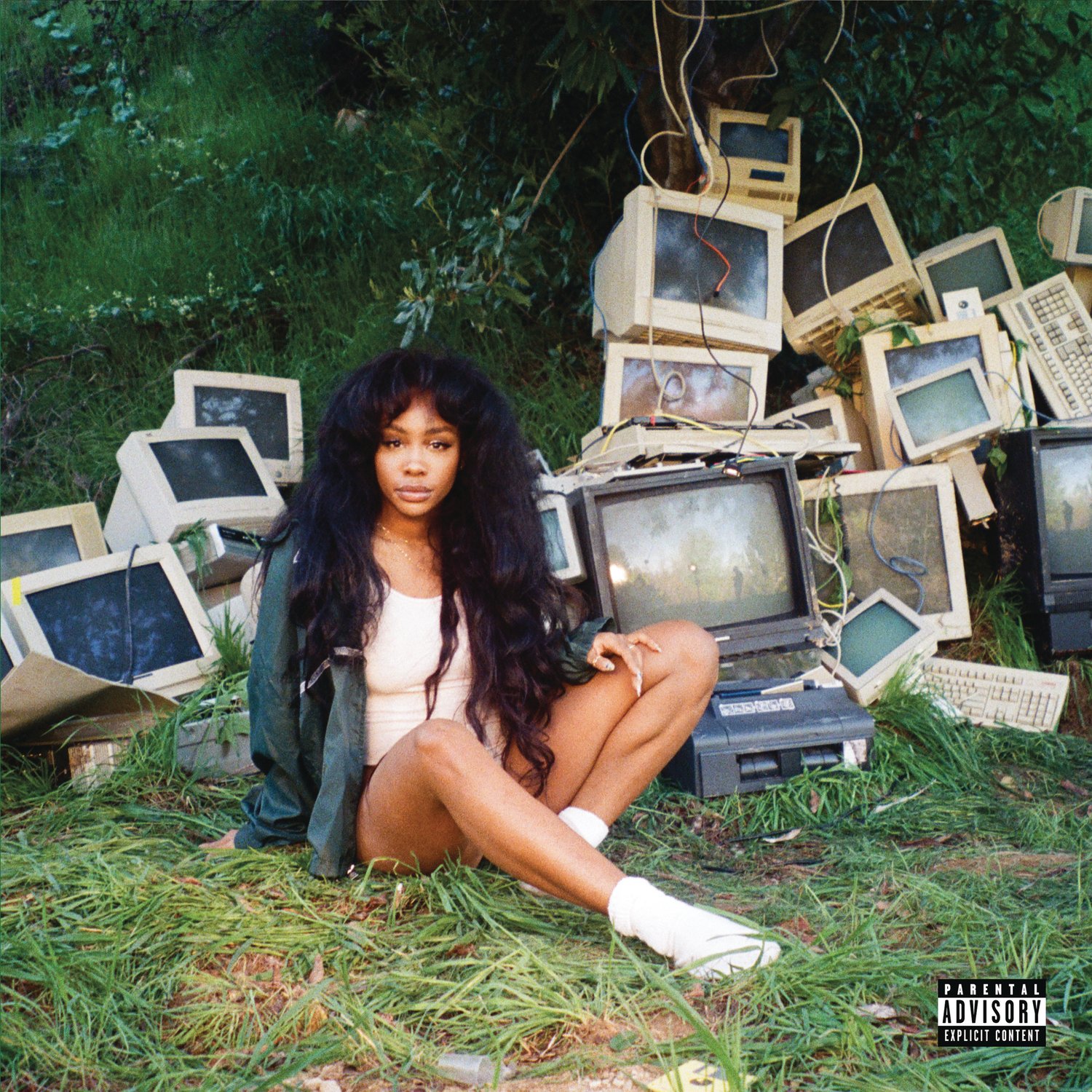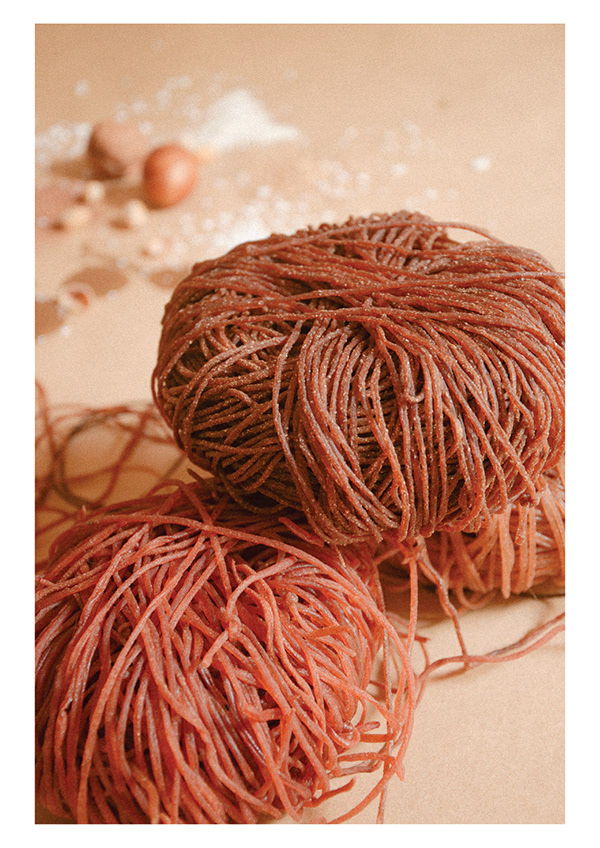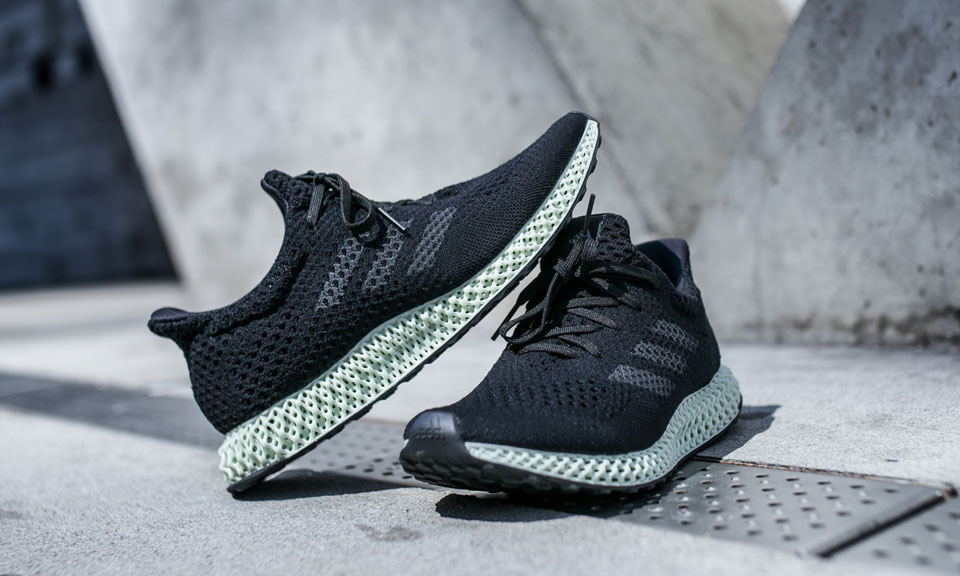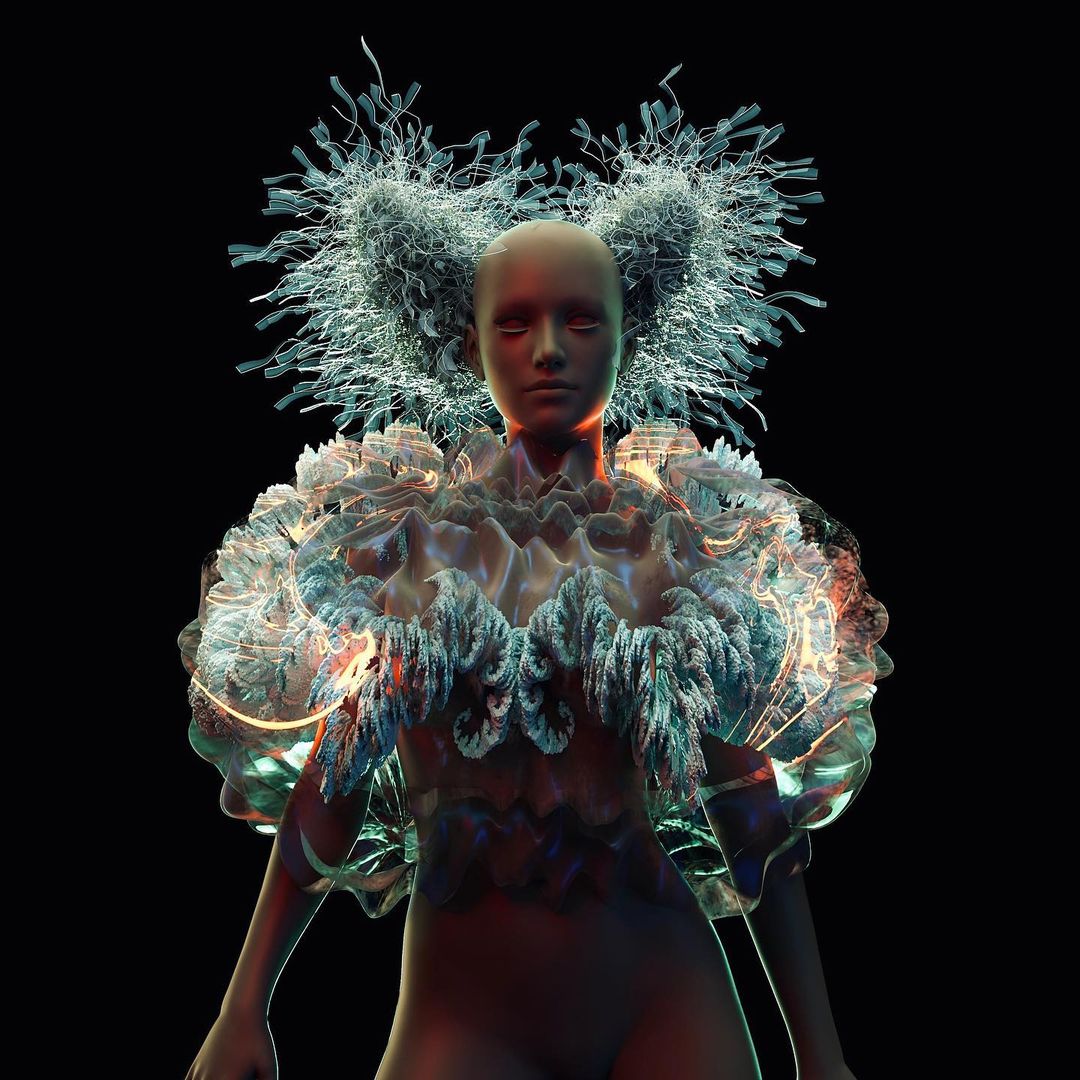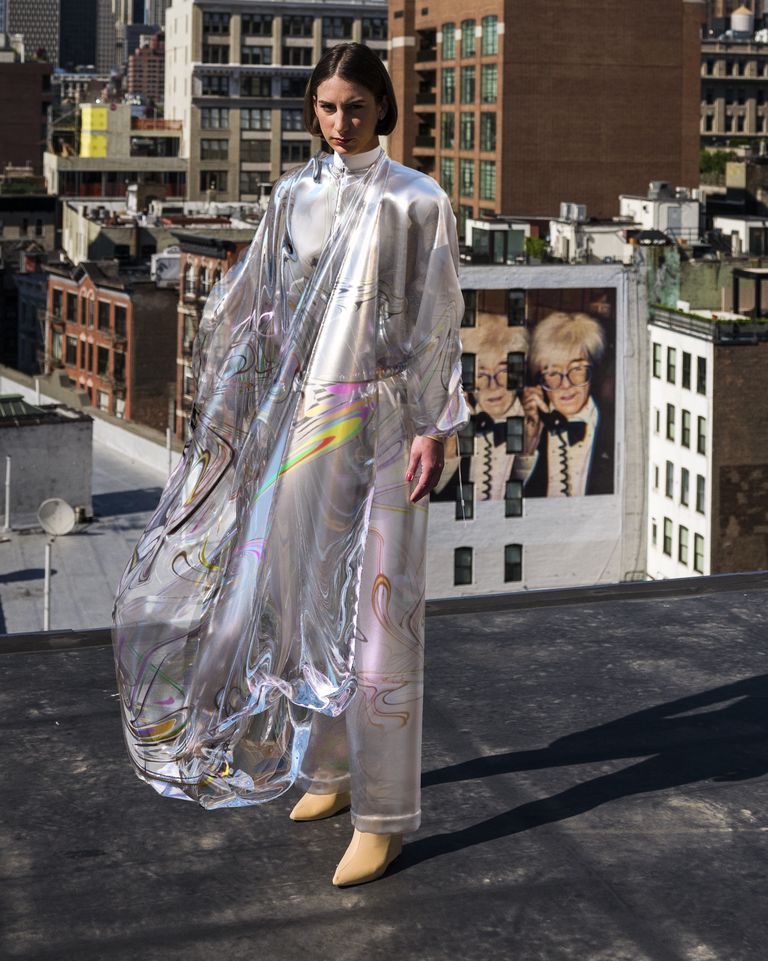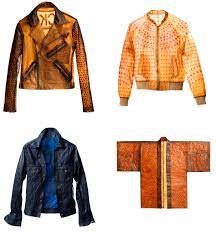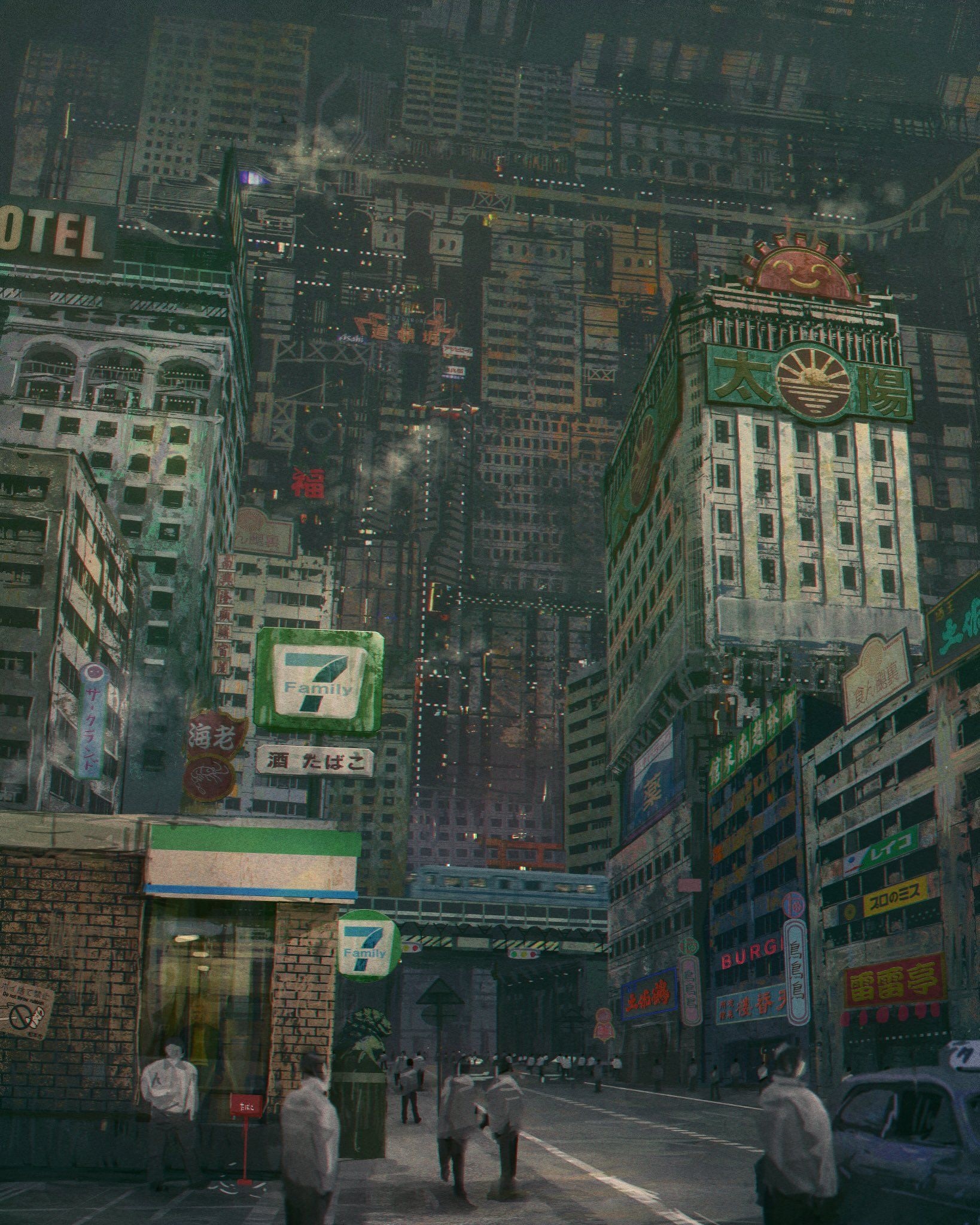1. Intertwined Coexistence of Man-made Structures with Nature
People build around and/or with nature, more so than building over it. For instance, with sea levels having risen significantly due to climate change, more coastal cities build homes, offices, parks, etc. on water. Previously predominantly grey cities incorporate much more greenery into their buildings and streets, like through vertical farming or through decorative means. Also, since so much of our services will have become virtual and gone online –such as malls or shopping malls– the physical spaces that used to provide their respective services are obsolete and abandoned. More of these spaces have been overtaken by nature. Mother nature is reclaiming her space by spreading itself and growing over buildings, statues, public transportation, cars, etc. Unfortunately, we still have a lot of non-recyclable trash (e.g. old computers, car tires, many plastics) that litter our spaces. But there is a sort of “acceptance” of these things that were useful once to let them be as they are now; not everything has to or even can be upcycled/recycled/modified in order to be useful again. Some things just exist and blatantly remain as waste in our environments, but we still don’t stop trying to find beauty hidden within them.
2. Changes in How Consumers Buy & How Companies Sell & Manufacture
For far too long, consumers have been restrained by how companies design, manufacture, and sell their products. Companies for far too long had been designing to sell rather than to last or renew. Legally, companies are required to design with the disposal or a product in mind, design for it to be easily discarded, reused, recycled, or upcycled. The same goes for packaging. This empowers consumers to be able to choose what to do with the products they buy when they have served their useful purpose and need to be disposed of. Consumers are also empowered because more individuals can make their own products, such as furniture, houseware, clothing, etc. at home. Technology on 3D printing, growing plants and other organic, natural materials, and many other kinds of manufacturing methods has significantly progressed such that it has become available to the general public. Consumers now depend less on how big corporations design, sell, and manufacture their products.
3. 3D Printing, AR, and Growing Your Own Clothes
3D printing has already been a growing area in technology, but the most recent development is the commercialization of 3D printers for clothes. People can order clothing designs online rather than the physical garments themselves and make their clothes at home. Several more industries have incorporated 3D printing into their businesses, making this technology commercially available and accessible to a great majority of the population.
Inevitably, more technology has become embedded into our lives, and one way it has been done in fashion is by making use of AR technology. Consumers can try on clothes through AR by looking through a screen how different garments would fit over their bodies without having to try the clothes on physically. This can be done in the comfort of one’s home, rendering physical shops even more obsolete but remain more as “the vintage way of shopping.” In addition to changes in how we shop for clothes, the garments themselves have codes that can be read to show animations and special effects through your phone screen as a way of merging the endless possibilities that the virtual world can provide and that the real world cannot.
However, because of growing concerns of climate change, people have been incorporating more nature into their lives every day in any way possible. As technology improves and further permeates through our lives, growing our own clothes has become an equally large presence in our society. Through biocouture, for instance, people can more easily grow full pieces of clothing or parts of garments.
4. “Nostalgia” for the Past
Regardless of the remarkable progress made in technology thus far, there is still a sort of “nostalgia” for how things used to be several decades, or even centuries, ago. There is a “conflicting” dynamic between a desire to return to how things were in the past versus the fast-paced developing technologies of today (i.e. the future). Fashion shows in virtual reality worlds are juxtaposed with individuals returning to hand sewing, knitting, weaving, etc. their own garments. New clothing lines using the latest, newest, revolutionary, sustainable materials emerge while other smaller businesses sell handmade clothes made from upcycled, nonrenewable materials.
Even our cities feel too new, too current, too modern, so there has been a growing trend where people start living further away from cities towards more rural locations. Since so much of our world is online and virtual, it is easier to stay remote while still being connected and “in the loop” with everything that is happening around the world. The high-stress of living in such fast-paced, densely populated cities has reached a point where people crave how spaces used to in the past: more green and natural, less grey and artificial. As such, living in more rural locations where there is less city noise, artificial lighting, pollution, etc. has become more desirable.
